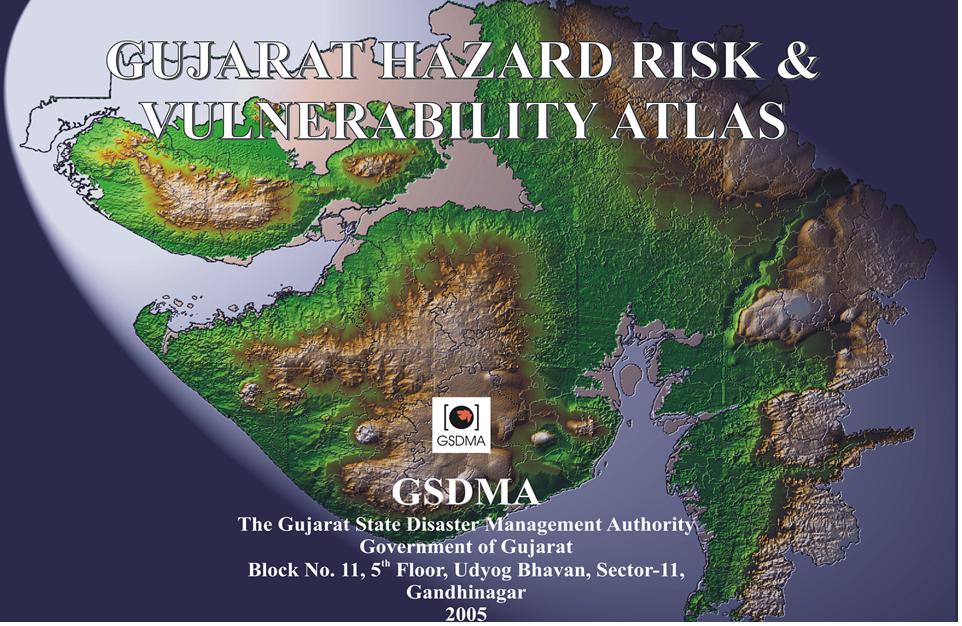| GSDMA has prepared a comprehensive Hazard Risk and Vulnerability Atlas (HRVA) for the State covering six major hazards namely Earthquake, Tsunami, Flood, Cyclone, Drought and Chemical and Industrial hazards. |
| The Atlas can not only be used for hazard risk identification but also for risk reduction and activities related to future development planning in the State. The Atlas has been derived from one of the largest and most detailed digital GIS databases prepared in India and covers all the 226 talukas, and 25 districts of the State. |
| The Atlas covers the physical, social and economic vulnerability of its people, assets and economy at Taluka-level for six natural and man-made hazards. The hazards have been examined in detail using advanced computer assisted GIS models, probabilistic analysis and detailed field studies. The most vulnerable Talukas, possible areas of highest loss of human life, population concentrations, crops, buildings and lifeline infrastructure have been identified in a descending order of risk that enables planning, intervention and investments in a prioritized, phased manner – making effective use of scarce resources. |
| The purpose behind preparing the Atlas is to enable the process of reducing risk in all types of hazards and transform Gujarat into one of the lowest risk States in terms of disaster. The Atlas is basically for the use of Government and related agencies for disaster mitigation and management activities, land use planning, etc. The Atlas was prepared using the census data of 2001. On release of the latest census data of 2011, GSDMA would initiate the process of reviewing / updating the Atlas. |
| |
 |